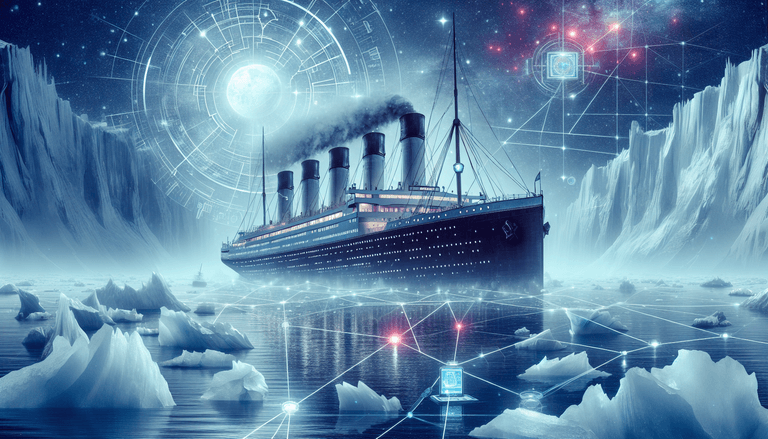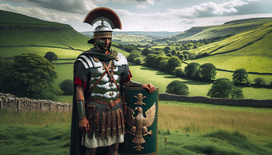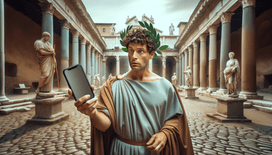Ah, the Titanic! A ship so famous, it needs no introduction. Built in the early 1900s and destined to become a floating palace, it was thought to be unsinkable. Sadly, it met its icy doom in the frigid waters of the North Atlantic. But what if, and allow me to indulge in my temporal daydream for just a moment, the Titanic had access to modern-day GPS technology? Would the ship have cruised past its monumental iceberg moment or, perhaps, sunk at the hands of its own Wi-Fi signal? Let’s set sail on this historical detour and take a closer look.
Charting a Course for the Imagination
Picture this: it’s April 1912, and Captain Edward Smith, resplendent in his naval attire, steps onto the bridge of the Titanic. But this time, rather than squinting at the stars or peering through a pair of binoculars (probably old enough to qualify as antiques today), he's glued to a state-of-the-art GPS device.
"Recalculating route, Captain!” The GPS chirps cheerily as Smith plots the Titanic’s course from Southampton to New York. The device, a boxy contraption that bears a striking resemblance to your mother-in-law's old sat-nav, assures him that the path is clear and iceberg-free.
Imagine the crew’s disbelief when, instead of dog-eared charts and compasses, they behold this electronic oracle, a talking box predicting peril and safety alike. The White Star Line proudly advertises its state-of-the-art navigation to potential passengers. "Ride the Titanic: now featuring GPS, keeping you up to date and up to speed!" they proclaim in their Edwardian brochures.
Averting the Iceberg Apocalypse
One fateful night, our dear Titanic enters the notorious iceberg-laden waters. With the GPS set to “Avoid Icebergs: ON,” the ship begins its journey. "Turn left, then keep right, then avoid iceberg in 50 metres," it intones with the authority of a football referee.
First Officer Murdoch, on duty at the bridge, pays close attention, fingers hovering nervously over the wheel. After all, even a wayward seagull could be misinterpreted by technology from the future. But alas, thanks to the guidance of this modern marvel, the ship deftly navigates past these formidable frozen foes.
"Smith, you’ll live to steer another day!" Murdoch exclaims as the iceberg detection works like a charm, setting the crew’s hearts at ease, and preserving the raucous jazz age party going on below deck.
When GPS Goes A-glitching...or, Auto-pilot Anguish
Modern technology, as we all know painfully well, is not without its quirks and quirksome perils. Imagine a parallel universe where, by some fault of nature or NASA, the GPS on the Titanic goes on the fritz. An unintentional nudge could cause the GPS to recalculate: "Rerouting. Rerouting. No destination found." Oh bother, pandemonium descends upon the bridge! Twirling compasses and flustered officers abound!
For those inclined towards technological schadenfreude, perhaps the Titanic sails directly into the flashy lights of Times Square rather than a tranquil New York berth. The hapless GPS, bemused yet unyielding, loops endlessly: "Your iceberg is behind you. Your iceberg is behind you."
The Social Media Ripple
With GPS, there also comes a flurry of tweets from the Titanic’s social media-savvy passengers. They include all the sea-snaps and location check-ins from wireless devices on-board: #UnsinkableLuxuryShip and #IcebergOrWhat. Few can predict what historical impacts such digital breadcrumbs could create. Would the wireless SOS have the same urgency amid the din of Instagram snaps and lively debates over Facebook? Surely communication over the airwaves takes on a hint of chaos as the internet, blissfully unaware of its own future power, tentatively tests the digital waters.
The Unsinkable Lessons
So, what have we learnt from this leap into a past blended with our digital present? Assuming the GPS didn’t recalibrate directly into destiny’s icy grasp, there’s a good chance the Titanic might have seen fewer soggy endings and more successfully completed voyages. And if nothing else, it would be a historical one-liner: "The Titanic arrives in New York, no shortage of directions this time!"
Our winding detour through time reminds us that, whilst technology can enhance our navigation through life’s proverbial sea of icebergs, it’s still fallible. But in both history and technology, it’s the journey, not the destination, that ignites our imaginations.
Join me next time, dear reader, as we dive into yet another historical twist or imaginable inevitability, who knows where our curious Timewarp Terry paths will lead?







